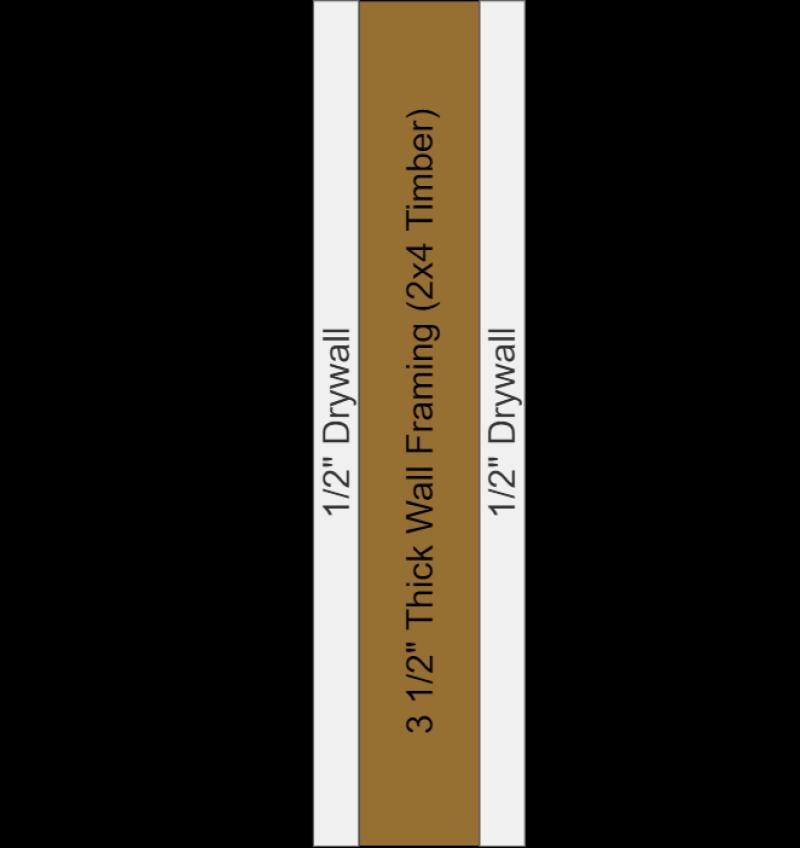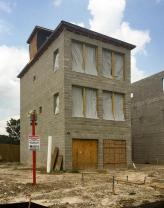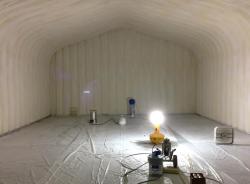What is a good wall thickness?
The appropriate wall thickness for structures depends on various factors, including the type of material being used, the purpose of the structure, and engineering considerations. There isn't a one-size-fits-all answer to what constitutes a "good" wall thickness, as it can vary significantly based on the specific application.
Here are some considerations for determining an appropriate wall thickness in different contexts:
Material Type:
- The material used for construction plays a crucial role. Different materials have varying strengths and structural properties. For example, the wall thickness for a concrete structure may differ from that of a steel or wood structure.
Structural Design:
- The structural design of the building or object is a key factor. Engineers calculate and design structures based on loads, forces, and stresses that the material will experience. The wall thickness should be sufficient to withstand these forces without compromising safety.
Building Codes and Standards:
- Local building codes and industry standards often dictate minimum requirements for structural elements, including wall thickness. Compliance with these codes is essential to ensure the safety and integrity of the structure.
Type of Structure:
- The intended use of the structure influences the required wall thickness. For example, the wall thickness for a residential building may differ from that of an industrial facility or a bridge. Each application has its own set of requirements and standards.
Environmental Conditions:
- Environmental factors, such as wind, seismic activity, or exposure to corrosive substances, can impact the necessary wall thickness. Structures in earthquake-prone areas may need additional reinforcement.
Economic Considerations:
- The cost of materials and construction is a practical consideration. Balancing structural integrity with cost-effectiveness is important. Engineers aim to optimize the use of materials to achieve the required strength without unnecessary excess.
Consultation with Structural Engineers:
- Consulting with structural engineers during the design phase is crucial. These professionals can perform calculations and simulations to determine the optimal wall thickness based on the specific requirements of the project.
Industry Practices:
- Industry-specific practices and standards provide guidelines for appropriate wall thickness in various applications. Following established practices ensures that the structure meets safety and performance expectations.
In summary, determining a "good" wall thickness depends on a combination of engineering calculations, adherence to building codes and standards, and consideration of the specific requirements of the structure. Consulting with experienced professionals in structural engineering and construction is essential to ensure that the chosen wall thickness meets safety and performance criteria for a given project.
Sure, here is the information you requested about wall thickness in construction:
What constitutes a good or optimal wall thickness in construction?
The optimal wall thickness in construction depends on a variety of factors, including the type of structure, the materials used, the local climate, and the desired level of soundproofing or energy efficiency. However, there are some general guidelines that can be followed.
Interior walls: Interior walls typically have a thickness of 4 inches (102 millimeters). This thickness is sufficient for most residential and commercial applications.
Exterior walls: Exterior walls typically have a thickness of 6 inches (152 millimeters). This thickness provides better insulation and structural support for exterior walls.
Load-bearing walls: Load-bearing walls, which support the weight of the roof or upper floors, may need to be thicker than 6 inches, depending on the weight they are supporting.
Soundproofing walls: Walls that need to be soundproofed, such as those in recording studios or performance halls, may need to be thicker than 6 inches. This is because thicker walls have a higher sound transmission class (STC), which means that they block more sound.
How does the purpose of a structure influence the ideal wall thickness?
The purpose of a structure can have a significant impact on the ideal wall thickness. For example, a residential home will have different wall thickness requirements than a commercial office building or a warehouse.
Residential homes: The walls in a residential home need to be thick enough to provide structural support, insulation, and soundproofing. They also need to be fire-resistant to protect the occupants in the event of a fire.
Commercial buildings: The walls in a commercial office building need to be thick enough to provide structural support and soundproofing. They may also need to be fire-resistant, depending on the type of occupancy.
Warehouses: The walls in a warehouse need to be thick enough to support the weight of stored goods. They may not need to be as fire-resistant as the walls in a residential or commercial building.
Are there industry recommendations or guidelines for wall thickness in specific environments?
Yes, there are several industry recommendations and guidelines for wall thickness in specific environments. These recommendations are based on the specific needs of the environment and the type of structure being built.
The American Institute of Architects (AIA) publishes the Architect's Handbook of Practice, which provides recommended wall thickness for a variety of applications.
The International Building Code (IBC) is a model building code that provides minimum wall thickness requirements for different types of structures.
The National Fire Protection Association (NFPA) publishes the Life Safety Code, which provides fire-resistant wall thickness requirements for different types of occupancies.
How does wall thickness affect energy efficiency and soundproofing?
Wall thickness can have a significant impact on both energy efficiency and soundproofing.
Energy efficiency: Thicker walls provide better insulation, which means that they keep heat in during the winter and heat out during the summer. This can save money on heating and cooling costs.
Soundproofing: Thicker walls block more sound, which can be important in homes, offices, and other buildings where noise is a concern.
Can a professional architect or engineer provide insights into determining a good wall thickness?
Yes, a professional architect or engineer can provide insights into determining a good wall thickness for a specific project. They will consider the factors listed above, as well as the specific needs of the client and the project. They will also be able to ensure that the walls are designed to meet all applicable building codes and standards.
It is always a good idea to consult with a professional architect or engineer when designing or building a new structure. They can help you make sure that your walls are the right thickness for your needs.












